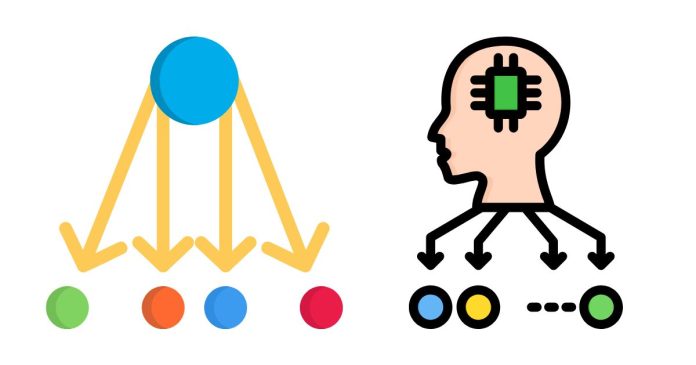Naive Bayes classifiers are a group of simple and powerful probabilistic algorithms based on applying Bayes’ Theorem with strong (naive) independence assumptions between features. They are widely used for classification tasks, especially in text classification, spam detection, and sentiment analysis.
Key Concepts
- Bayes’ Theorem: Bayes’ Theorem describes the probability of an event based on prior knowledge of conditions that might be related to the event:
P(A∣B)=P(B∣A)⋅P(A)P(B)P(A|B)Where:
- P(A∣B)P(A|B): Probability of AA given BB (posterior probability)
- P(B∣A)P(B|A): Probability of BB given AA
- P(A)P(A): Prior probability of AA
- P(B)P(B): Prior probability of BB
- Naive Assumption: The “naive” part assumes that all features are independent of each other. This simplifies computation but may not always hold true in real-world scenarios.
Types of Naive Bayes Classifiers
- Gaussian Naive Bayes:
- Assumes that features follow a normal (Gaussian) distribution.
- Suitable for continuous data.
- Formula for likelihood: P(xi∣C)=12πσ2⋅e−(xi−μ)22σ2P(x_i|C) = \frac{1}{\sqrt{2\pi\sigma^2}} \cdot e^{-\frac{(x_i – \mu)^2}{2\sigma^2}}
- Multinomial Naive Bayes:
- Used for discrete data like word counts in text classification.
- Common in natural language processing (NLP).
- Bernoulli Naive Bayes:
- Designed for binary/Boolean data.
- Suitable for features that indicate the presence or absence of a specific attribute.
Steps in Naive Bayes Classification
- Calculate Prior Probabilities (P(C)P(C)):
- Based on the proportion of each class in the training data.
- Calculate Likelihood (P(xi∣C)P(x_i|C)):
- Use the probability distribution of each feature given a class.
- Apply Bayes’ Theorem:
- Compute the posterior probability for each class: P(C∣X)∝P(X∣C)⋅P(C)P(C|X) \propto P(X|C) \cdot P(C)
- Choose the class with the highest posterior probability.
Advantages
- Simple and Fast:
- Computationally efficient for large datasets.
- Works Well with Small Data:
- Performs well even with limited training data.
- Handles Multiple Classes:
- Can easily classify into multiple categories.
- Text Classification:
- Very effective for tasks like spam detection or sentiment analysis.
Disadvantages
- Independence Assumption:
- The assumption that features are independent often does not hold true, which can affect accuracy.
- Zero Frequency Problem:
- If a feature value does not occur in the training set, its probability becomes zero. (Handled using smoothing techniques like Laplace smoothing.)
Applications
- Spam Detection:
- Classifying emails as spam or not spam.
- Sentiment Analysis:
- Analyzing the sentiment of customer reviews or tweets.
- Document Categorization:
- Organizing news articles, blogs, or documents by topic.
- Medical Diagnosis:
- Predicting diseases based on symptoms.
Python Implementation Example
from sklearn.naive_bayes import MultinomialNB
from sklearn.feature_extraction.text import CountVectorizer
from sklearn.model_selection import train_test_split
# Sample data
data = ["I love programming", "Python is amazing", "I hate bugs", "Debugging is hard"]
labels = [1, 1, 0, 0] # 1: Positive, 0: Negative
# Convert text to feature vectors
vectorizer = CountVectorizer()
X = vectorizer.fit_transform(data)
# Split into training and testing sets
X_train, X_test, y_train, y_test = train_test_split(X, labels, test_size=0.5, random_state=42)
# Train Naive Bayes classifier
model = MultinomialNB()
model.fit(X_train, y_train)
# Predict
predictions = model.predict(X_test)
print(predictions)
Naive Bayes classifiers are versatile, efficient, and serve as excellent baseline models for classification problems.


